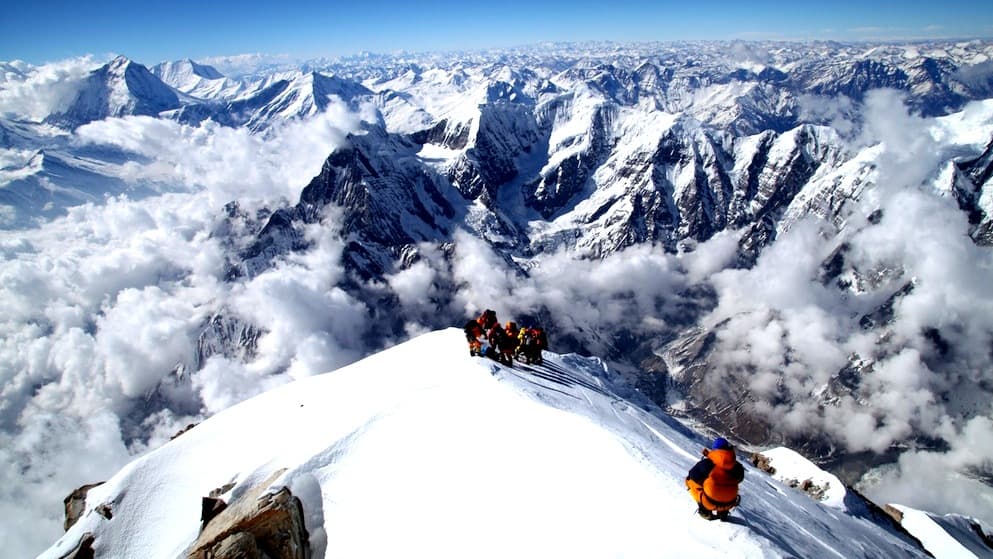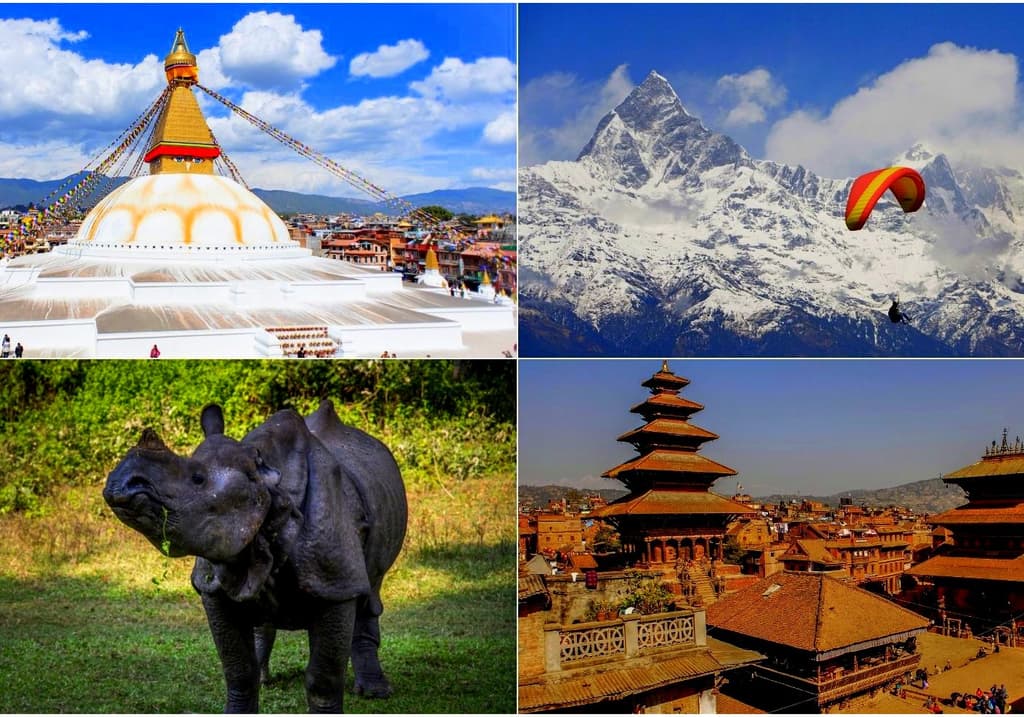Climate change is reshaping the very fabric of mountain expeditions in Nepal, with altered weather patterns standing out as a critical challenge. We are deeply aware of the impacts these changes have on the planning and execution of high-altitude climbs. The once predictable weather windows, essential for planning safe ascents, are now marked by increased unpredictability and extreme conditions, complicating expedition schedules and putting climbers at greater risk.
- Increased Weather Unpredictability: The predictability of weather conditions in the Himalayas has significantly decreased, making it harder for climbers and expedition planners to choose optimal climbing windows.
- Shift in Climbing Seasons: Traditional climbing seasons are being affected, with some seasons experiencing more severe weather conditions, which can include unexpected storms and temperature fluctuations.
- Risk of Sudden Weather Changes: Climbers now face a higher risk of encountering sudden and severe weather changes while on their expeditions, increasing the danger of being caught in storms or extreme cold.
- Impact on Expedition Success Rates: The altered weather patterns can lead to a higher number of expeditions being delayed, shortened, or even canceled, affecting the overall success rates of climbs in the Himalayas.
- Adapting to New Challenges: We adapting to these new challenges by utilizing advanced weather forecasting technologies and developing more flexible expedition schedules to accommodate the increased weather unpredictability.
By recognizing and adapting to the altered weather patterns caused by climate change, we continue to prioritize the safety and satisfaction of our clients. Our commitment to sustainable tourism practices and environmental awareness ensures that we remain leaders in providing unforgettable and safe Himalayan adventures, despite the challenges posed by a changing climate.
Shifting Climbing Seasons
The impact of climate change on Nepal's mountain expeditions is profoundly evidenced through the shifting of traditional climbing seasons, affecting both the pre-monsoon and post-monsoon periods, which are critical for expeditions in the Himalayas. These shifts have altered the landscape of mountain climbing, affecting day and night temperatures, which are crucial for planning and executing expeditions safely and successfully.
Pre-Monsoon Season (Spring)
- Period: Late March to May
- Day Temperatures: At base camp, day temperatures can vary from 5°C to 10°C (41°F to 50°F), creating relatively warmer conditions for climbing preparations. However, as climbers ascend, temperatures can drop significantly, especially above 4,000 meters (13,123 feet), where daytime temperatures might hover just above freezing.
- Night Temperatures: Night temperatures at base camp can drop to -5°C to 0°C (23°F to 32°F). In higher elevations, temperatures at night can fall below -20°C (-4°F), particularly in the death zone, where they can plummet to -25°C to -30°C (-13°F to -22°F).
Post-Monsoon Season (Autumn)
- Period: September to November
- Day Temperatures: Similar to the pre-monsoon season, base camp day temperatures can range from 5°C to 10°C (41°F to 50°F). This season typically offers clearer skies and more stable weather, but climate change has introduced more unpredictability.
- Night Temperatures: Night temperatures at base camp during this season are slightly warmer than in the pre-monsoon period, ranging from -5°C to 5°C (23°F to 41°F). However, in higher altitudes, temperatures after sunset can quickly drop to -20°C (-4°F) or lower, especially in areas above 8,000 meters.
Impact of Climate Change
Climate change has led to a noticeable shift in these seasons, with warmer temperatures extending further into what would traditionally be the colder months. This affects not only the physical conditions of the glaciers and snowpack but also the ecosystem and wildlife dependent on these temperature cycles.
- Glacier Melting and Route Instability: Increased temperatures lead to accelerated glacier melting, affecting the stability of climbing routes and increasing the risk of avalanches and icefalls.
- Weather Unpredictability: Climbers face increased difficulty in predicting weather windows for safe ascents, as traditional patterns become less reliable. Unexpected weather changes, including sudden storms and temperature spikes, pose additional risks.
- Adaptation and Flexibility: Expeditions must now employ more flexible planning, with contingencies for weather-related delays and route changes. This includes closer monitoring of weather forecasts and adjusting climbing schedules to accommodate the shifting seasons.
We are acutely aware of these challenges and remain committed to providing safe, responsible, and unforgettable climbing experiences. Our emphasis on environmental sustainability and adaptability ensures that we continue to offer high-quality expeditions while addressing the impacts of climate change on Nepal's mountain expeditions.
Melting Glaciers and Icefalls
One of the most visible and concerning effects of climate change on Nepal's mountain expeditions is the melting of glaciers and icefalls. These icy behemoths, which have stood as silent witnesses to centuries of climatic shifts, are now retreating at an unprecedented rate. We recognize the gravity of this situation and its implications for the future of Himalayan mountaineering.

- Accelerated Glacier Retreat: The Himalayas, home to the largest concentration of glaciers outside the polar regions, are experiencing rapid glacier melt. This not only alters the landscape but also affects water sources downstream, impacting millions of people.
- Instability of Icefalls: Icefalls, such as the notorious Khumbu Icefall on the route to Mount Everest, are becoming increasingly unstable. These dynamic structures are formed by glaciers as they move and crack, creating a maze of ice towers and crevasses. The warming climate exacerbates the movement and melting of these icefalls, making them more dangerous to navigate.
- Changes in Climbing Routes: The retreat of glaciers and the instability of icefalls necessitate constant reassessment and alteration of established climbing routes. What was once a stable path may now be fraught with new crevasses or unstable ice, requiring climbers to adapt to these changes.
- Increased Risk of Avalanches and Icefalls: The melting of glaciers and the destabilization of ice structures lead to an increased risk of avalanches and icefalls, posing significant dangers to climbers, sherpas, and porters on these expeditions.
- Impact on Local Communities: The melting glaciers also threaten the livelihoods of local communities that depend on glacial waters for agriculture, drinking, and hydroelectric power. As glaciers retreat, the risk of glacial lake outburst floods (GLOFs) increases, posing a threat to villages and infrastructure.
We are deeply committed to mitigating the impacts of these environmental changes through sustainable expedition practices. We advocate for increased awareness and action on climate change, aiming to preserve the majestic beauty and integrity of Nepal's mountainous landscapes for future generations. Our approach includes educating our clients about the effects of climate change, promoting eco-friendly trekking practices, and supporting conservation efforts in the region. Through these efforts, we hope to contribute to a sustainable future for Himalayan expeditions.
Formation of Glacial Lakes
The rapid formation of glacial lakes due to climate change is a critical concern for the sustainability and safety of mountain expeditions in Nepal. As glaciers retreat, they often leave behind significant amounts of meltwater that accumulates in depressions on the landscape, forming glacial lakes. We are acutely aware of the challenges and risks these emerging lakes pose to climbers, local communities, and the overall integrity of the Himalayan ecosystem.

- Increased Risk of Glacial Lake Outburst Floods (GLOFs): One of the most immediate dangers associated with the formation of glacial lakes is the potential for Glacial Lake Outburst Floods. These catastrophic events occur when the natural dam, often composed of ice or moraine, holding back the lake water fails, releasing massive volumes of water downstream. The impact can be devastating, destroying villages, bridges, and trekking routes.
- Alteration of Climbing Routes: The expansion and formation of new glacial lakes may necessitate the rerouting of traditional climbing paths. As lakes expand, they can cut off access to established routes or create new hazards that climbers must navigate, adding complexity and unpredictability to expeditions.
- Environmental and Ecological Impacts: Beyond the immediate risks to climbers and infrastructure, the formation of glacial lakes signifies profound environmental and ecological changes in the Himalayas. These lakes alter the hydrology of the region, affecting water availability and ecosystem dynamics both locally and downstream.
- Monitoring and Adaptation: Recognizing the significant threat posed by the formation of glacial lakes, we incorporate advanced monitoring techniques and collaborate with local and international researchers to stay informed about the status of these lakes. This knowledge allows for the adaptation of expedition routes and the implementation of safety measures to protect climbers and minimize the impact on the environment.
- Raising Awareness: Through education and advocacy, we aim to raise awareness about the impacts of climate change on the Himalayas, including the formation of glacial lakes. By informing climbers and the broader public about these issues, we hope to foster a community committed to sustainable mountaineering practices and environmental conservation.
The formation of glacial lakes due to climate change underscores the need for a collective effort to address environmental challenges in the Himalayas. We remain dedicated to leading this effort, ensuring that the beauty and allure of Nepal's mountains can be enjoyed by future generations while prioritizing safety and environmental sustainability.
Adaptation of Climbing Routes
The unprecedented pace of climate change is compelling the mountaineering community in Nepal to confront and adapt to new realities, particularly in the context of climbing routes. As glaciers recede, new lakes form and weather patterns shift unpredictably, Luxury Holidays Nepal is at the forefront of adjusting and innovating climbing strategies to ensure the safety and success of expeditions.

- Reassessment of Traditional Routes: The retreat of ice and snow is altering the landscape of Nepal's mountains, making many traditional climbing routes obsolete or significantly more hazardous. This necessitates a continuous reassessment of routes to identify new paths that are both safe and viable.
- Incorporation of Advanced Technology: To adapt to these changes, the use of advanced technology for route planning and weather forecasting has become integral. Satellite imagery, GPS mapping, and real-time weather data are now critical tools in identifying safe routes and predicting weather windows.
- Enhanced Training for Climbers and Guides: The dynamic nature of the mountain environment under the influence of climate change requires climbers and guides to be well-versed in a broader range of skills. Luxury Holidays Nepal emphasizes enhanced training programs that cover navigation of new terrains, rapid response to weather changes, and emergency preparedness.
- Collaboration with Scientific Community: By collaborating with the scientific community, Luxury Holidays Nepal gains insights into the long-term impacts of climate change on the Himalayas. This collaboration aids in the development of more sustainable climbing practices and contributes to global climate change mitigation efforts.
- Promotion of Sustainable Climbing Practices: As part of adapting climbing routes, there is a concerted effort to minimize environmental impact. This includes practices like reducing waste, using eco-friendly gear, and avoiding sensitive ecological zones, which are crucial for preserving the mountain environment for future generations.
- Raising Awareness Among Climbers: We are committed to raising awareness about the impacts of climate change among climbers. By educating climbers on the importance of adapting to changing conditions and promoting sustainable practices, the company fosters a community that respects and protects the natural beauty of the Himalayas.
The adaptation of climbing routes in response to climate change is a testament to the resilience and ingenuity of the mountaineering community in Nepal. We continue to lead this charge, ensuring that the thrill and spirit of mountain expeditions endure, even in the face of environmental challenges. Through careful planning, innovation, and respect for nature, the company is helping to secure a sustainable future for Himalayan mountaineering.






